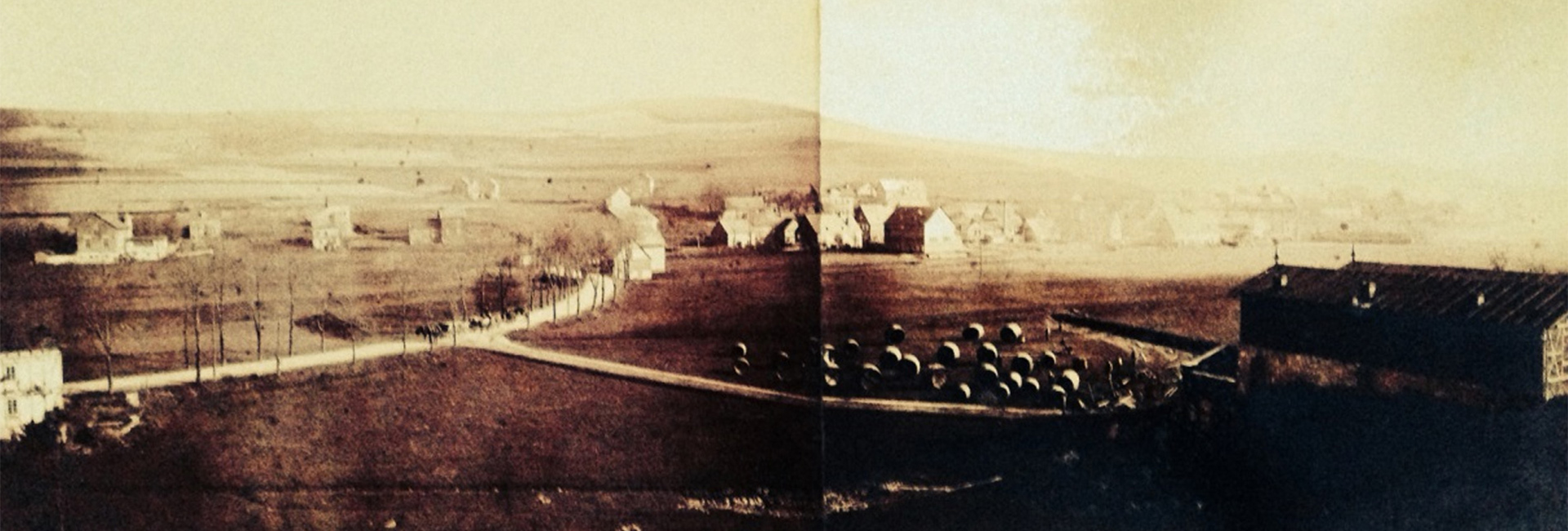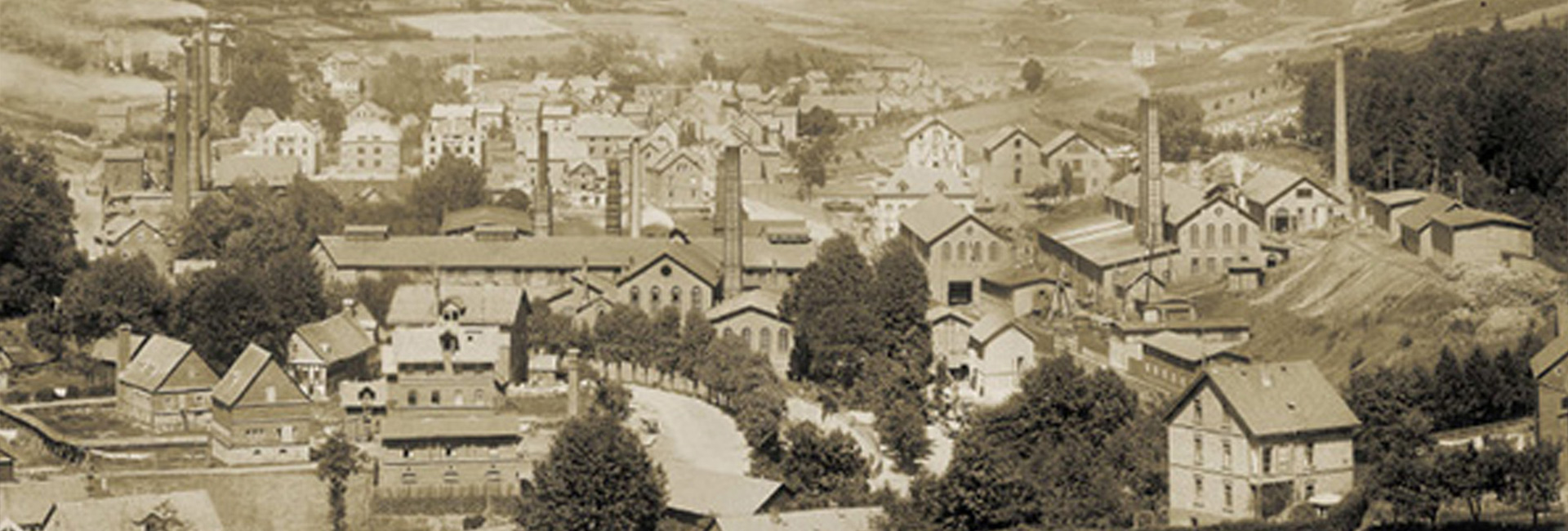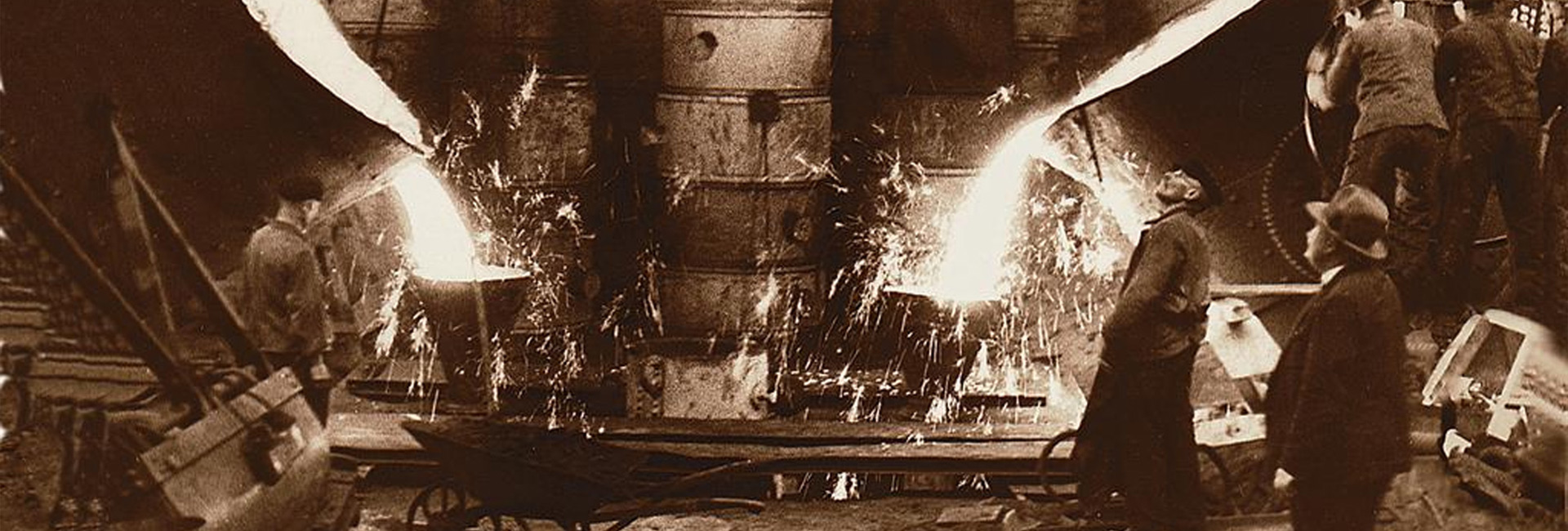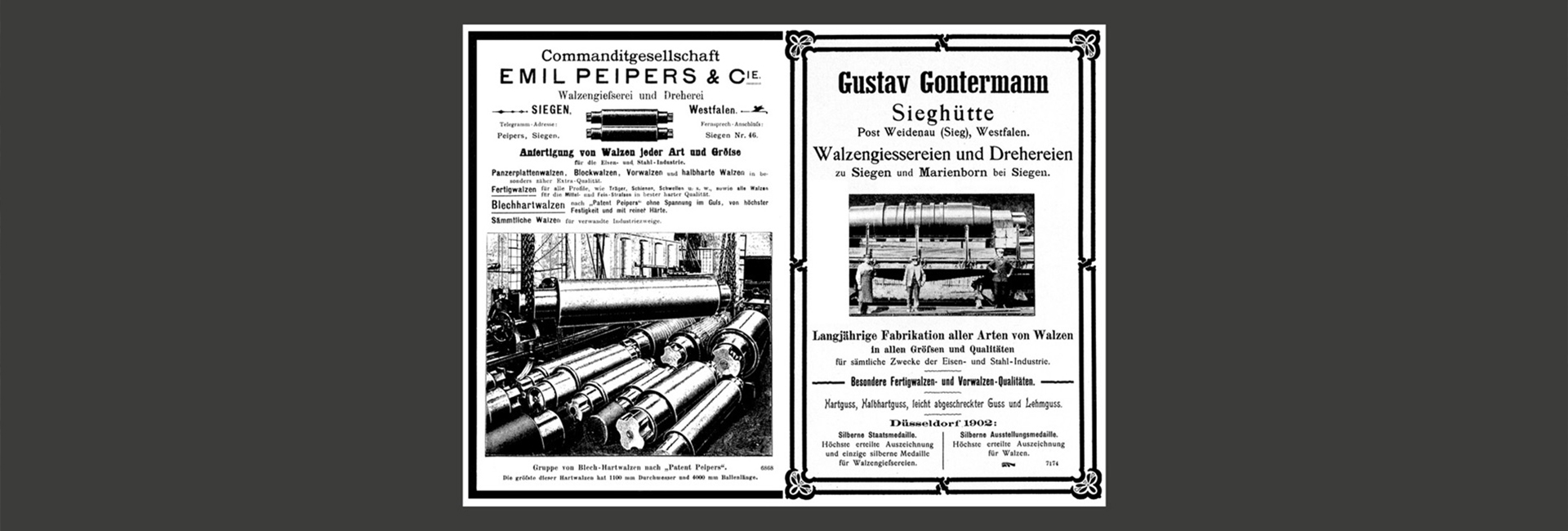ROOTS
Beginning in 1970, the Marienborn plant is equipped for the production of ultra-heavy-duty rolls. GP subsequently supplies the 265 metric tons heavy-plate back-up rolls for Dillinger Hüttenwerke and the 236 metric tons back-up roll for Arconic Davenport, USA – the world's largest rolls for steel and aluminum, respectively.
GP develops the electro-chemical measuring-point preparation (ECM) system for measurement of residual stress, hardness and residual austenite. This method makes decisive contributions to improvements in quality. It has meanwhile been upgraded with an automated ultrasonic inspection system for the entire roll bodies.
From the mid-1990s, the entire Company undergoes a process of comprehensive organizational development. This includes a new corporate mission statement and strong emphasis on teamwork. A modern salary agreement with transparent career paths, a candid and open information policy and an advanced system of profit sharing come into effect.
Comprehensive investments in real estate, buildings and technical equipment: acquisition of the premises of the neighboring Kabelschlepp company at the Hain location and expansion of the plant site at Marienborn via integration of the Eisenhüttenstrasse street and acquisition of a former railway station site for use as a rail-connected logistics center.




